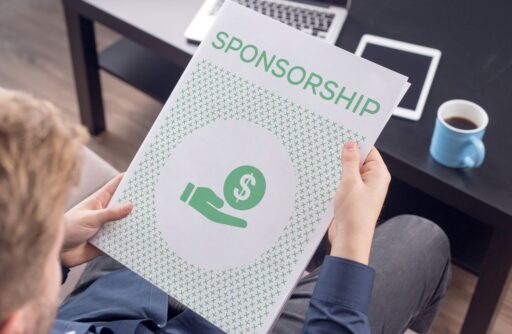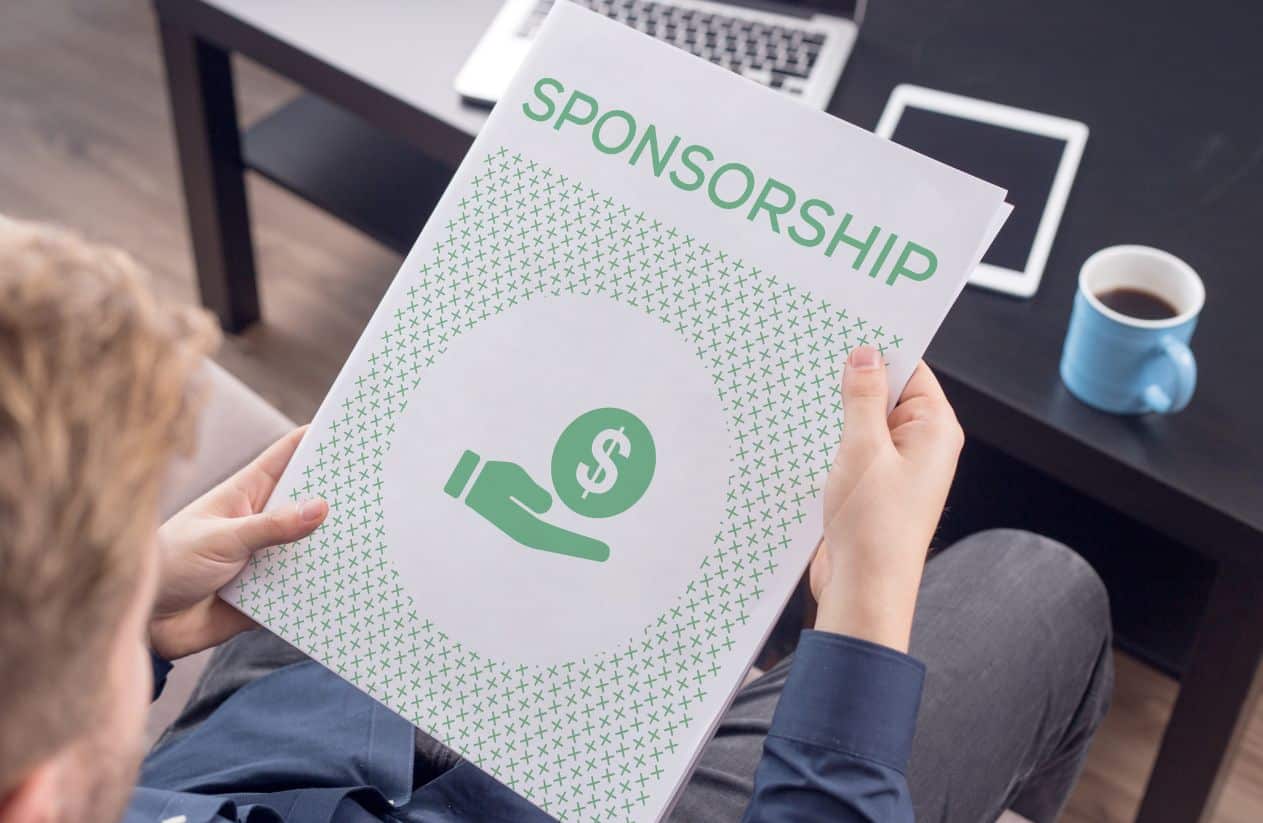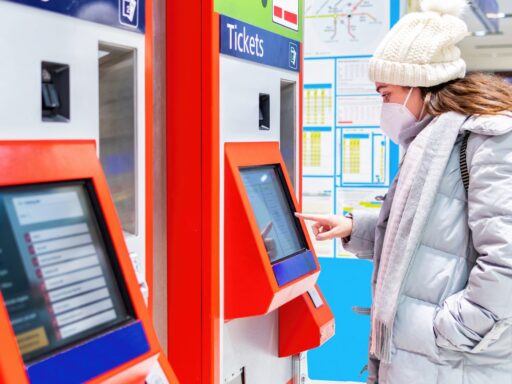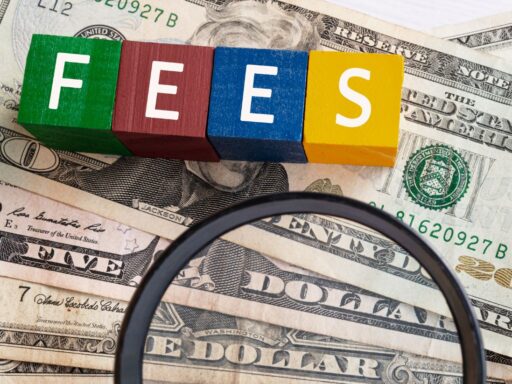Ever felt the pressure of funding a fantastic event, or wondered how to truly make it stand out in a crowded landscape? You’re definitely not alone. Event organizers often juggle countless tasks, and securing the right support can sometimes feel like climbing a mountain.
But what if I told you that event sponsorship isn’t just about filling budget gaps? It’s about forging powerful, mutually beneficial partnerships that can genuinely elevate your event from good to unforgettable.
This comprehensive sponsorship packages guide is your ultimate blueprint. We’re diving deep into identifying ideal partners, crafting irresistible packages tailored to their specific needs, mastering effective marketing strategies, and building lasting relationships that go far beyond a single event.
Get ready to unlock your event’s full potential and create win-win scenarios that leave everyone thrilled.
Understanding the Core of Event Sponsorship: Beyond the Transaction

Alright, let’s peel back the layers of event sponsorship. It’s easy to think of it as just a check changing hands, but that’s like calling a symphony just a bunch of instruments.
True event sponsorship is a strategic alliance, a dynamic partnership where both sides bring something valuable to the table and walk away with more than they started. It’s about finding that perfect synergy, not just a quick transaction.
What Exactly is Event Sponsorship?
Go beyond a simple definition; explain it as a strategic alliance. True event sponsorship is a strategic alliance, a dynamic partnership where both sides bring something valuable to the table and walk away with more than they started. It’s about finding that perfect synergy, not just a quick transaction.
The Mutual Value Proposition: A Two-Way Street
Think of it as a two-way street, a mutual value proposition. On one side, your event offers sponsors incredible access to a targeted audience, amplified brand visibility, a chance to build goodwill, and a unique platform for engagement.
Imagine their logo not just on a banner, but integrated into an experience that resonates deeply with attendees! On the flip side, sponsors provide your event with crucial funding, invaluable resources (think equipment, expertise, or even marketing muscle), enhanced credibility, and expanded reach you might not achieve alone. It’s a powerful exchange that fuels growth for everyone involved.
Key Principles for Sponsorship Success
For this partnership to truly flourish, a few key principles are non-negotiable. First, there must be a genuine alignment of values and goals. If a sponsor’s mission clashes with your event’s ethos, it’s probably not the right fit. Second, transparency and clear communication are paramount. No surprises, just open dialogue from day one.
And finally, remember that the most successful sponsorships aren’t one-off deals; they’re built on long-term relationship building. Nurturing these connections means future success for both your event and your partners.
Also Read Our Article About “Unlock the Full Potential of Your Event with Digital Ticketing Solutions”
Identifying Your Ideal Sponsors: A Strategic Approach

Now that we’ve got the foundational understanding down, let’s talk about finding those perfect partners. This isn’t a shot-in-the-dark exercise; it’s a strategic hunt for brands that truly resonate with your event’s spirit and audience.
Knowing Your Event’s Unique Appeal
Before you even think about reaching out, you need to deeply understand what makes your event shine. What’s its superpower?
- Audience Deep Dive: Who are your attendees, really? Go beyond simple demographics like age and location. What are their interests, their passions, their spending habits? Dive into psychographics. Use surveys from past events, analyze your social media insights, and dig into any available analytics. The more you know about your audience, the more compelling your pitch will be to a potential sponsor looking to reach exactly those people.
- Event Vibe & Values: Every event has a personality. Is yours a high-energy tech conference, a relaxed family festival, an eco-conscious community gathering, or a cutting-edge arts showcase? Articulate this distinct vibe and the core values it represents. Sponsors want to align with events that reflect positively on their brand.
- Assets Inventory: Beyond the Obvious: This is where you get creative! Of course, you have banner space, but what else? Think about unique physical spaces (a specific stage naming right, a chill-out zone, a branded photo booth), unique experiences (exclusive content creation opportunities, a sponsor-hosted workshop, a meet-and-greet with a key speaker), or digital touchpoints (app integration, dedicated email blasts, interactive social media campaigns). Every unique asset is a potential hook for a sponsor.
Researching Potential Partners
Once you’re clear on your event’s appeal, it’s time to find companies that fit the bill.
- Who’s Sponsoring Similar Events? This is your competitive intelligence phase. Look at other events in your niche or geographic area. Who are their sponsors? This gives you a great starting point and shows you which brands are already investing in similar audiences. Tools like SponsorPitch or even a good old Google search can help here.
- Brand Mission Alignment: Don’t just look for companies with big budgets. Seek out those whose marketing goals, values, and target audience genuinely match yours. If your event promotes sustainability, a green energy company is a much better fit than one known for high emissions. This alignment ensures a more authentic and successful partnership.
- Industry-Specific Research: Dive into trade publications, industry news, and business directories relevant to your event’s theme. Use social listening tools to see which brands are actively engaging with conversations around your event’s topics.
- Leveraging Your Network: Never underestimate the power of a warm introduction. Reach out to your contacts – friends, colleagues, past attendees, even your vendors. You’d be surprised who might know someone at a target company. A personal referral can open doors that cold emails can’t.
Creating a Sponsor Prospect List
As you gather this information, start building a structured list of potential sponsors. Categorize them:
- Dream Sponsors: The big names, perfect fit, but might be harder to land.
- Target Sponsors: Excellent fit, good budget, realistic chances.
- Emerging Brands/Local Businesses: Smaller budgets, but great for community engagement or niche events, and often eager for exposure.
This organized approach will make your outreach far more efficient and effective.
Crafting Irresistible Sponsorship Benefits & Measurable Outcomes

Alright, you’ve identified your dream sponsors and know your event’s unique charm. Now, how do you convince them that partnering with you is an absolute no-brainer?
It’s all about articulating the irresistible benefits and, crucially, showing them how you’ll prove their investment was worth every penny. This is where your sponsorship packages guide truly comes alive.
Beyond Logo Placement: Diverse Benefits That Dazzle
Forget just slapping a logo on a banner and calling it a day. Today’s sponsors want more, and your event can deliver! Think creatively about the diverse benefits you can offer:
- Brand Visibility (The Smart Way): Yes, logos are still important, but how can you make them pop? Think interactive digital displays, unique co-branded merchandise that attendees actually want to keep, or prominent mentions in pre-event marketing campaigns across various channels. Consider a sponsored “charging station” or a branded photo booth that creates shareable moments.
- Audience Engagement (Hands-On Experiences): This is gold! Sponsors love to connect directly with your audience. Offer opportunities for interactive activations, like a product sampling booth, a mini-game station, or even an experiential zone where attendees can try out their latest offerings. The more memorable the interaction, the stronger the brand recall.
- Lead Generation & Sales Opportunities: For many sponsors, this is the ultimate goal. Can you offer data capture opportunities (with attendee consent, of course), exclusive discounts or offers for your attendees, or even dedicated direct sales booths at your event? Make it easy for them to convert interest into action.
- Brand Association & Goodwill: Aligning with a positive, well-run event can significantly boost a sponsor’s image. If your event has a strong community focus or supports a charitable cause (CSR initiatives), highlight how their sponsorship contributes to these positive efforts. It’s about building a shared narrative of success and community impact.
- Networking & VIP Access: Don’t forget the power of connections! Offer sponsors exclusive opportunities to network with key stakeholders, industry leaders, or high-value attendees. Think VIP lounges, private receptions, or dedicated B2B meeting spaces.
Defining Measurable Success: Why KPIs Matter (and Which Ones to Track!)
Here’s the truth: sponsors want to see a return on their investment. That’s why defining and tracking Key Performance Indicators (KPIs) isn’t just good practice; it’s essential for demonstrating ROI and securing future partnerships.
- Why KPIs Matter: Simply put, KPIs provide concrete evidence of value. They transform vague promises into tangible results, showing sponsors exactly how their investment translated into measurable outcomes for their brand.
- Examples of Event-Specific KPIs:
- Website Traffic/Impressions: Track clicks from sponsor mentions on your event website or dedicated landing pages.
- Social Media Reach & Engagement: Monitor mentions of sponsor hashtags, brand tags, and overall engagement metrics (likes, shares, comments) on posts featuring your sponsors.
- Lead Capture Numbers: If you offer lead generation opportunities, track the number of qualified leads collected by the sponsor.
- Brand Recall Surveys: Post-event surveys can gauge how well attendees remember and associate specific sponsors with your event.
- Product Trial/Sales Data: If applicable, work with sponsors to track product trials or direct sales made at or because of the event.
- Media Mentions/PR Value: Quantify the media coverage your event (and thus your sponsors) received, including estimated PR value.
- Reporting Back to Sponsors: This is crucial. A well-structured, timely post-event report that clearly outlines the KPIs achieved, highlights successes, and offers insights for future improvements is a non-negotiable part of building lasting relationships. It shows professionalism and your commitment to their success.
Designing Tailored Sponsorship Tiers & Packages
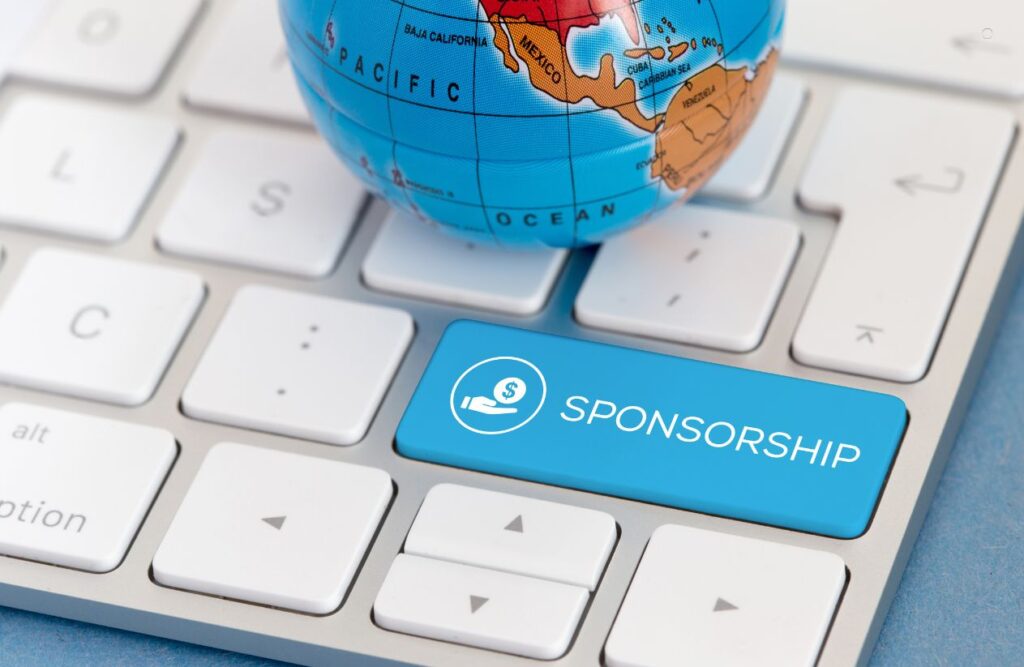
You’ve got your potential sponsors lined up, and you’re ready to wow them with the incredible value your event offers. But here’s the secret sauce to truly irresistible sponsorship packages: customization! Forget the old “one-size-fits-all” approach; today’s savvy sponsors expect a proposal that speaks directly to their unique goals and budget.
The “One-Size-Fits-None” Philosophy
Why is customization paramount? Because every brand, even within the same industry, has distinct marketing objectives. A tech startup might prioritize lead generation, while a long-established company might focus on brand goodwill or community engagement.
A generic package simply won’t hit all these diverse targets, often leading to missed opportunities and a lukewarm response. Tailoring your offerings shows you’ve done your homework and genuinely understand their needs.
Segmenting Your Offerings: The Tiered Approach
While full customization is the ultimate goal, starting with a tiered structure provides a clear framework and helps sponsors quickly identify their potential fit.
- Naming Tiers Creatively: Ditch the boring “Bronze, Silver, Gold.” Instead, give your tiers names that resonate with your event’s theme. For a music festival, think “Headliner,” “Spotlight,” and “Community Partner.” For a tech conference, maybe “Innovator,” “Pioneer,” and “Catalyst.” These names add personality and make the packages more memorable.
- Clearly Differentiate Benefits per Tier: Each tier should offer distinct value and exclusivity. Your top tier should include the most prominent branding, exclusive activations, and premium networking opportunities. As you move down, the benefits scale proportionally, but always ensure even your lowest tier offers significant, measurable value.
- Smart Pricing Strategy: How do you set the right price? Consider your event’s overall costs, the perceived value of each benefit you’re offering, and market rates for similar events. Don’t just pull numbers out of thin air! Research what competitors charge and be prepared to justify your pricing based on the ROI you can deliver.
The Art of Customization: Making it Personal
Once a sponsor shows interest, that’s your cue to dive deeper and truly personalize the proposal.
- Discovery Calls: Asking the Right Questions: This isn’t a sales pitch; it’s a conversation. Ask open-ended questions about their marketing challenges, target audience, past sponsorship experiences (good and bad!), and what success looks like for them. Listen intently to their answers – they’re giving you the blueprint for their ideal package.
- Building Bespoke Packages: Armed with insights from your discovery call, mix and match your event’s assets to create a package that’s truly unique to that sponsor. Perhaps they need more digital visibility, or maybe they’re keen on a specific interactive activation. Don’t be afraid to combine elements from different tiers or invent something entirely new.
- Flexibility and Negotiation: Be open! The goal is a win-win. If a sponsor loves an idea but their budget is a bit tight, explore alternatives. Can you swap out a less critical benefit for something more impactful within their price range? Successful negotiation builds trust and shows you’re committed to the partnership.
Crafting a Compelling Proposal Document
Finally, all this hard work culminates in a professional, persuasive proposal.
- Key Elements: Your proposal should include a concise executive summary (the “why” they should sponsor), an overview of your event, a detailed profile of your audience, the proposed sponsorship opportunities (clearly outlining both tiered and custom options), the KPIs you’ll track, and a clear call to action.
- Visual Appeal: Remember, people “buy” with their eyes first. Invest in a professional, clean design. Use compelling imagery, infographics to represent data, and a clear layout that’s easy to read and understand. A visually appealing proposal reflects the professionalism of your event.
By mastering the art of tailored packages, you’re not just selling space; you’re building strategic partnerships that truly resonate and deliver exceptional value for everyone involved.
Mastering the Art of Marketing Your Sponsorship Opportunities

You’ve done the groundwork: identified ideal sponsors, and crafted compelling sponsorship packages.
Now, how do you get those fantastic proposals in front of the right eyes and make them truly irresistible? It’s all about mastering the art of marketing your sponsorship opportunities. This isn’t just about sending out a few emails; it’s a strategic campaign designed to attract and convert.
Developing a Strategic Outreach Plan
Think of your sponsorship outreach as a marketing campaign in itself. A well-thought-out plan is your roadmap to success.
- Timeline is Everything: When should you start reaching out? Ideally, well in advance of your event – often 6-12 months for larger events, or at least 3-4 months for smaller ones. This gives sponsors ample time for budget allocation, internal approvals, and planning their activations. Don’t rush it!
- Targeted Communication is Key: Forget generic mass emails. Your outreach should be highly personalized. Use the insights you gathered in Section III to tailor your initial emails, direct messages on LinkedIn, or even phone calls. Reference their company’s recent campaigns, their values, or how their products align with your event. Show them you’ve done your homework and genuinely believe in the fit.
Leveraging Digital Platforms for Maximum Reach
In today’s digital world, your online presence is your most powerful marketing tool for sponsorships.
- Dedicated Sponsorship Page: Your event website absolutely needs a professional, easy-to-find page dedicated to sponsorship opportunities. This page should clearly outline the benefits, showcase your audience demographics, provide contact information, and ideally, offer a downloadable prospectus or media kit with all the details. Make it visually appealing and easy to navigate.
- Strategic Social Media Engagement: Don’t just post “Sponsor Us!” Create targeted ads on platforms where your potential sponsors’ marketing teams are active (LinkedIn is often prime). Share compelling organic posts that highlight past sponsor successes, audience excitement, or unique event features that would appeal to brands. Use relevant industry hashtags.
- Smart Email Marketing: Build segmented email lists based on your sponsor prospect categories (e.g., tech companies, local businesses, lifestyle brands). Craft personalized email sequences that nurture interest, share success stories, and invite them to discovery calls.
- Online Portals & Directories: Explore industry-specific sponsorship portals or event directories where brands actively look for partnership opportunities. Platforms like IEG, SponsorUnited, or even local chamber of commerce directories can be valuable resources.
Building Trust & Credibility: Show, Don’t Just Tell
Sponsors want confidence that their investment is safe and will yield results.
- Testimonials from Past Sponsors: Nothing speaks louder than a happy client! Gather glowing testimonials from previous sponsors about their positive experiences and the ROI they achieved. Feature these prominently on your sponsorship page and in your proposals.
- Case Studies of Successful Partnerships: Go a step further than testimonials. Create brief case studies that detail a specific past sponsorship, outlining the sponsor’s goals, the activations implemented, and the measurable results achieved. This provides concrete proof of your ability to deliver.
- Professionalism at Every Touchpoint: From your initial email to your proposal design and follow-up, maintain a high level of professionalism. This builds confidence and shows sponsors they’re dealing with a reliable and competent team.
By combining strategic planning with smart digital and in-person outreach, you’ll effectively market your sponsorship opportunities and attract the partners who are truly excited to invest in your event’s success.
Related Content: Maximizing Event Success: A Guide to Effective Sponsorship Measurement
Building Lasting Sponsor Relationships: The Key to Future Success
Congratulations! You’ve successfully landed a sponsor, and your event is a hit. But here’s a crucial insight: the work doesn’t end when the event wraps up.
In fact, the post-event phase is where you lay the groundwork for future success, transforming a one-time deal into a long-term, mutually beneficial partnership. Building lasting sponsor relationships is the golden ticket to sustainable event growth.
Beyond the Event Day: Nurturing the Partnership
Think of your sponsors as VIP guests who deserve continued attention and care, even after the last attendee leaves.
- Ongoing Communication: Don’t go silent! Maintain regular updates and check-ins. Share positive feedback from attendees, media mentions, or interesting data points related to their sponsorship. Keep them in the loop about your event’s impact and future plans.
- Fulfilling Promises, and Then Some: This sounds obvious, but it’s paramount. Ensure every single benefit you promised in your sponsorship packages is delivered, and ideally, over-delivered. Go the extra mile where you can – a small, unexpected bonus can make a huge difference in their perception of your professionalism.
- Post-Event Reporting: The Story of Success: This is your chance to shine! Prepare a detailed, visually appealing post-event report. This report should clearly outline the KPIs you agreed upon (from Section IV), showing how their investment translated into tangible results. Include impact summaries, attendee feedback, photos, and any media coverage. This isn’t just data; it’s the story of their success with your event.
Nurturing Long-Term Partnerships: The Path to Renewal
A successful first sponsorship is just the beginning. Your goal is to make them want to come back for more!
- Feedback Sessions: Learning and Growing Together: Schedule a post-event feedback session with your sponsors. This is invaluable. Ask them what worked well, what could be improved, and what their goals are for future marketing efforts. This shows you value their input and are committed to making future partnerships even better.
- Proactive Renewal Discussions: Don’t wait until the last minute to discuss renewal for your next event. Start these conversations early, perhaps 3-6 months after the current event, while the positive experience is still fresh in their minds. Use the success metrics from your report to build a compelling case for continued partnership.
- Showing Appreciation: Small Gestures, Big Impact: A simple thank-you note, a personalized gift, or even just a thoughtful email acknowledging their contribution can go a long way. These small gestures build goodwill and reinforce the idea that they are valued partners, not just revenue sources.
By consistently delivering value, communicating effectively, and genuinely nurturing these relationships, you’ll transform one-time sponsors into loyal, long-term advocates who are eager to support your events year after year.
Conclusion: Your Blueprint for Sponsorship Success
So, there you have it – your complete journey from grasping the basics of event sponsorship to identifying ideal partners, crafting irresistible packages, marketing them effectively, and building those crucial long-term relationships.
Remember, at its heart, sponsorship is far more than just a transaction; it’s a powerful partnership that fuels mutual growth. Now, it’s your turn! Take these strategies, start planning, and watch your events transform.
We hope this sponsorship packages guide empowers you to unlock incredible potential. Go forth and create unforgettable experiences, knowing you have the blueprint for lasting success.
Event Sponsorship Packages Guide- FAQ Section
Creating compelling sponsorship packages for events, concerts, and festivals is often a nuanced art that requires insight, creativity, and a deep understanding of both your event and potential sponsors’ goals.
Below are some frequently asked questions by event organizers looking to craft winning sponsorship proposals.
Where do I find potential sponsors for my event?
Focus on companies that align with your event’s theme and audience. Research businesses that sponsor similar events, target those with overlapping demographics and use your existing network for introductions.
What should I include in my sponsorship packages?
Offer benefits that help sponsors reach their goals. Include things like logo placement, social media promotion, VIP access, speaking time, or exhibition space. Be flexible and tailor packages to individual sponsor needs.
How do I price my sponsorship packages?
Consider the size of your event, its potential reach, and the value of the benefits offered. Research pricing for similar events. Offer multiple sponsorship tiers to appeal to different budgets, and be open to negotiation for the best fit.
In conclusion, crafting winning sponsorship packages involves a strategic approach to identifying potential sponsors, assembling attractive offers, and setting competitive prices.
By understanding your event’s value and aligning it with the goals of potential sponsors, you can develop compelling packages that serve the interests of both parties.
